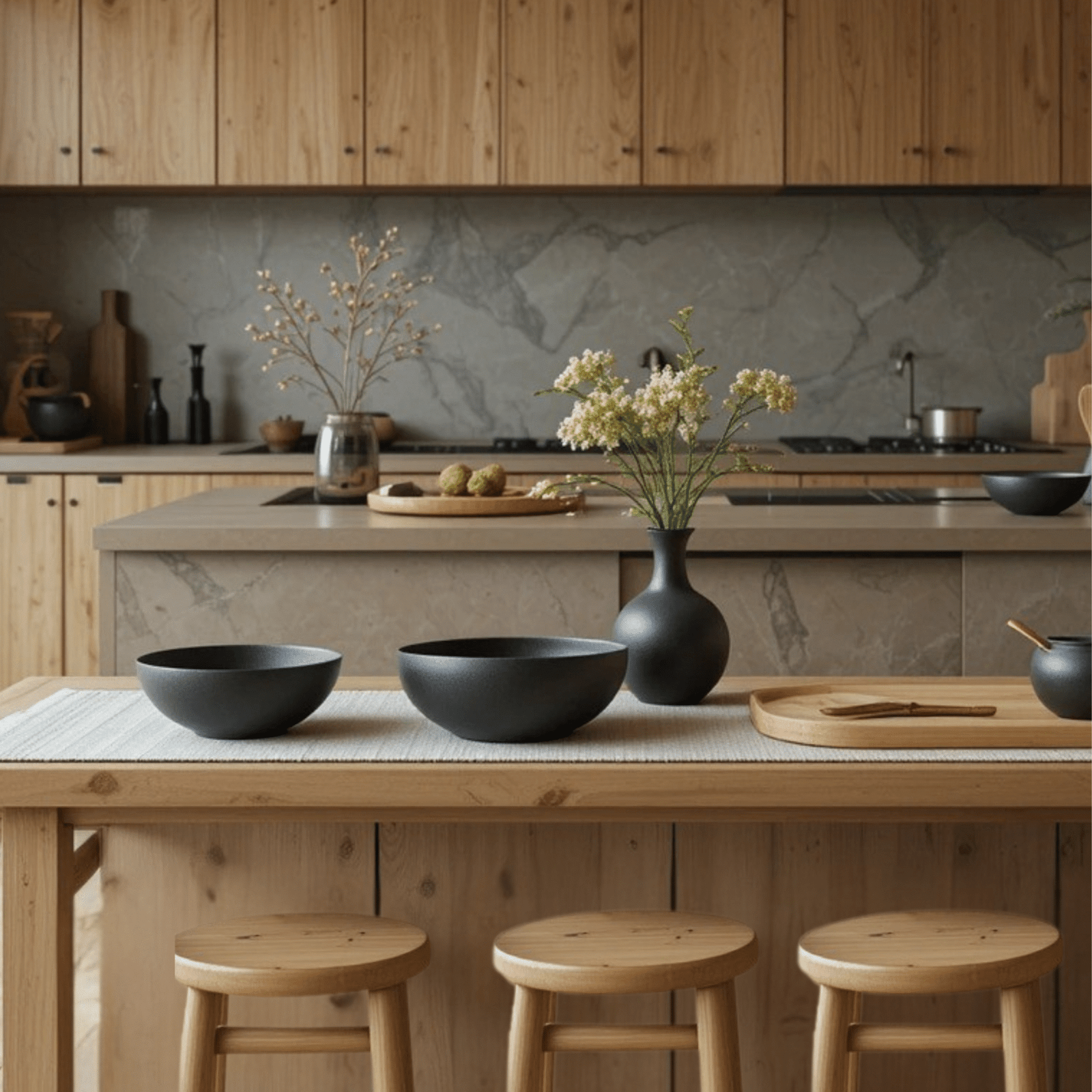In the quest for a kitchen that embodies both functionality and tranquility, the Japandi style emerges as a perfect solution. This design trend marries the sleek, modern elements of Japanese minimalism with the rustic warmth of Scandinavian design. By focusing on natural materials, simplicity, and neutral tones, you can create a kitchen that is not only efficient but also a serene retreat. Here’s a step-by-step guide to styling a Japandi kitchen using six essential products: natural wood cabinets, black ceramic dinnerware, a linen table runner, light wood bar stools, a bamboo cutting board, and a ceramic utensil holder.
Embrace Minimalism with Natural Wood Cabinets
The foundation of any Japandi kitchen is its cabinetry. Natural wood cabinets are a hallmark of this style, emphasizing the beauty of simplicity and the elegance of natural materials. Choose cabinets with a light wood finish, such as oak or ash, to provide a warm, inviting atmosphere. The wood’s subtle grain adds texture and depth, while its neutral hue maintains the minimalist aesthetic.
To enhance the Japandi look, opt for cabinets with clean lines and minimal hardware. Consider using recessed handles or push-to-open mechanisms to keep the design sleek and understated. The natural wood cabinets serve as a perfect backdrop for the kitchen, allowing other elements to shine without overpowering the space.
Add Contrast with Black Ceramic Dinnerware
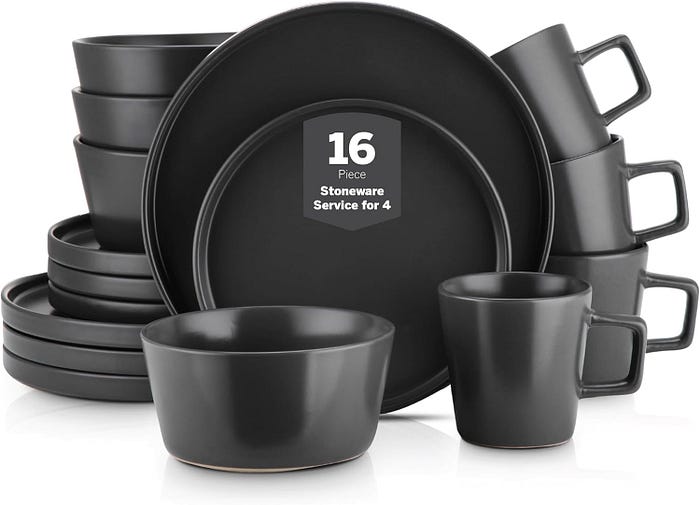
Contrasting elements are essential in Japandi design, and black ceramic dinnerware offers the perfect opportunity to introduce striking visual interest. The rich, dark tones of the ceramic pieces add depth and sophistication, providing a beautiful contrast to the light wood cabinets.
Choose dinnerware with simple, unadorned shapes to maintain the minimalist ethos. The matte finish of black ceramic adds a tactile quality, inviting touch and interaction. Display the dinnerware on open shelves or within glass-front cabinets to allow the beauty of these pieces to enhance the overall aesthetic of the kitchen.
Introduce Softness with a Linen Table Runner
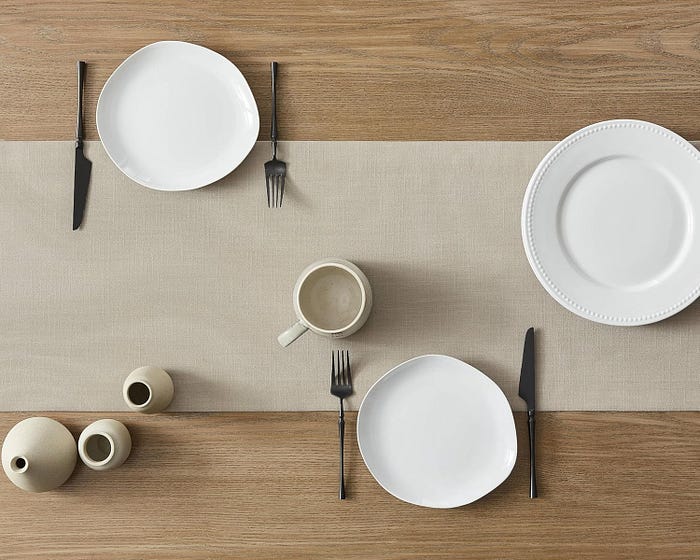
A linen table runner is an excellent way to introduce softness and warmth to your Japandi kitchen. Linen, with its natural texture and muted tones, complements the wood cabinets and ceramic dinnerware, adding a layer of elegance and comfort.
When selecting a table runner, choose neutral shades like soft grey or beige to harmonize with the kitchen’s color palette. Drape the runner across your dining table or breakfast bar, allowing its gentle folds to create a relaxed, inviting atmosphere. This simple addition not only softens the space but also provides a tactile contrast to the hard surfaces in the kitchen.
Incorporate Natural Elements with Light Wood Bar Stools

Seating is an integral part of any kitchen, and light wood bar stools are a perfect choice for a Japandi space. Their natural material and simple design align seamlessly with the style’s principles of minimalism and functionality.
Select bar stools with clean lines and comfortable seating, perhaps with a woven seat or a slight curve to the backrest. The light wood finish will echo the cabinetry, creating a cohesive look. Place the stools at your kitchen island or bar, ensuring they are spaced adequately to maintain the room’s open and airy feel.
Enhance Functionality with a Bamboo Cutting Board
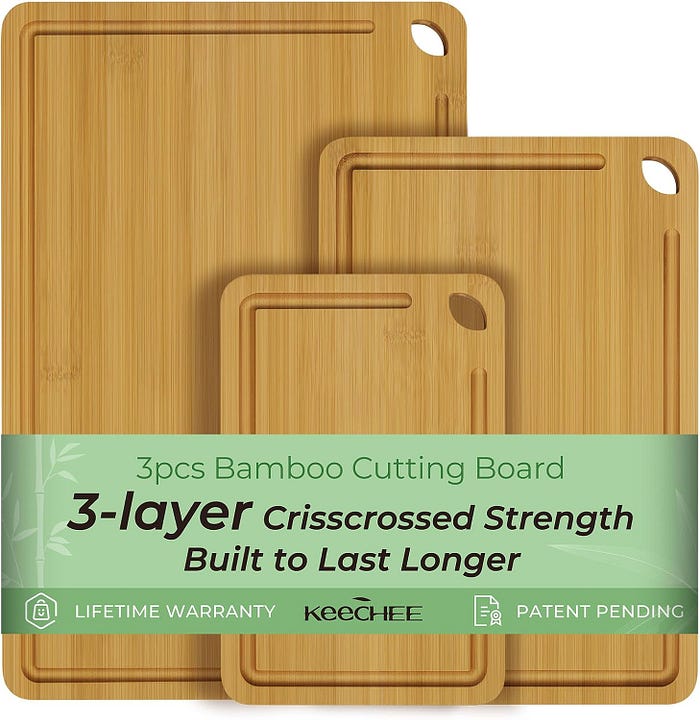
Every kitchen needs functional tools, and a bamboo cutting board perfectly combines utility with style. Bamboo is a sustainable material that resonates with the Japandi philosophy of using natural, eco-friendly elements.
Choose a cutting board with a simple design and smooth finish. Its natural color will complement the kitchen’s palette, while its durability makes it a practical addition for daily use. When not in use, the cutting board can be displayed against the backsplash or stored upright on the counter, adding an organic touch to the kitchen.
Organize with a Ceramic Utensil Holder
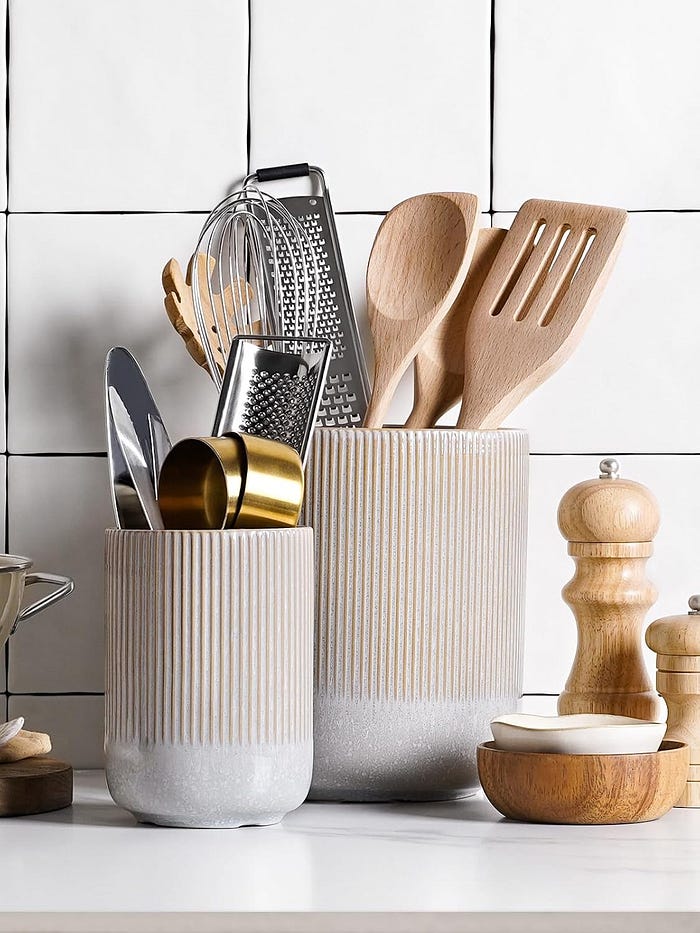
A well-organized kitchen is a hallmark of Japandi style, and a ceramic utensil holder helps achieve this goal. This piece not only keeps your cooking tools within easy reach but also contributes to the kitchen’s aesthetic appeal.
Opt for a utensil holder in a neutral color, such as white or grey, with a simple, elegant design. The ceramic material adds a touch of refinement, while its functional role supports the kitchen’s streamlined organization. Place it near the stove or on a countertop, where it can be both a practical and decorative element.
Conclusion: Creating a Japandi Kitchen Sanctuary
By thoughtfully incorporating these six essential products, you can transform your kitchen into a Japandi sanctuary — a space that embodies both function and serenity. The natural wood cabinets provide a warm and inviting backdrop, while the black ceramic dinnerware adds contrast and depth. A linen table runner introduces softness, and light wood bar stools offer natural elegance. The bamboo cutting board enhances functionality, and the ceramic utensil holder ensures organization and style.
Together, these elements create a harmonious kitchen that is both aesthetically pleasing and functional. By embracing minimalism, natural materials, and warm neutral tones, your Japandi kitchen becomes a serene retreat — a perfect balance of Japanese and Scandinavian influences that welcomes you into a world of calm and beauty.
This post may contain affiliate links.I may earn a small commission if you purchase through these links,at no extra cost to you.
